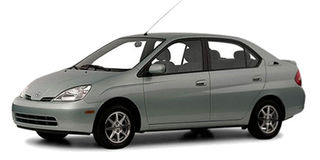Is a Prius your answer to the high fuel prices?

The Toyota Prius. COURTESY PHOTO
What you need to know:
A hybrid car is one with a petrol engine and an electric motor, each one of which can propel it. The Toyota Prius holds the distinction of being the world’s first mass-produced, mass-marketed hybrid car, as well as the most fuel-efficient gas-powered vehicle.
I recently took my car to the garage for the regular oil change and what do I see, a Toyota Prius. For the uninitiated, this is a Hybrid car, best selling Hybrid car in the world. And Hybrid basically means mishmash of both the conventional an internal combustion engine and an electric motor powered by batteries, merging the best features of today’s engine cars and electric cars while keeping emissions and fuel usage to a minimum. Unfortunately the Prius was there for more than just an oil change. Apparently the owner, with naive knowledge that this thing has insane fuel sipping qualities, decides to do Masaka on Shs35,000 worth of fuel. The tank ofcourse went on empty and the battery died too. Logically I would imagine the car flashing some sort of warning to tell the driver he or she needs to fuel up etc. The mechanic told be here was a whole host of other issues that resulted into the car’s current state.
Exterior
When you look at the Toyota Prius, you do not seem to get very excited, in fact, you become bored just staring at it. The styling is quite frankly bland, there could have been a lot more creative inspiration put into the design which is attributed to aerodynamics.
Do not expect much if you plan to drive this car hard as it is simply not designed to do anything but drive sensibly however, when you need to accelerate hard, the battery supplies additional energy to boost drive power, while the engine and motor provide smooth acceleration response. But under lighter load conditions, such as stop-and-go traffic, the Prius alternates between the two, oftentimes running purely on battery power alone.
Engine
The engine switches on and off almost seamlessly, and it takes an alert driver to detect it. The only indications are the noise level, which goes from unnatural silence to a light engine hum. When you put your foot on the brake the Prius’ “regenerative braking system” uses the kinetic energy of the wheels to generate electricity which charges the battery, so almost no power is wasted. The Prius takes full advantage of lightweight materials, everything from its body shell to the accelerator has been designed to be as lightweight as possible to enhance its efficiency.
Fuel efficiency
I had a chat with Donald Lule, a senior instructor with the motor vehicle section at Nakawa Vocational Institute, about the Prius technology. First thing he said, “See much of today’s coolest car technology is expensive upfront and even more expensive to fix. Even the most commonplace repair or replacement can cost a small fortune.” While pointing at the intimidatingly pulled apart Prius, “for instance where can you get that car’s motor or battery replacement?” A fair heads up to all current and potential Prius owners in Uganda, however, with a change in tone to an excited one, he explained that the ultimate goal of the Prius is to reduce emissions and fuel consumption with maximum efficiency achieving mileage of up to 20 kilometres per litre.
Cost of repairs
While hybrids possess many great benefits, they also come with a few cons as well. For instance, due to the complex computer system needed to make this car work, hybrid owners should expect more complex and expensive repairs than a regular car. I would suggest avoiding the first-generation cars (1999-2004), as they’re slow, much smaller inside, and now likely quite high-mileage.
At a price of Shs20m to Shs30m for a first generation Prius, I would recommend to look elsewhere as for that money, you better off getting a full on engine car such as a Premio.




